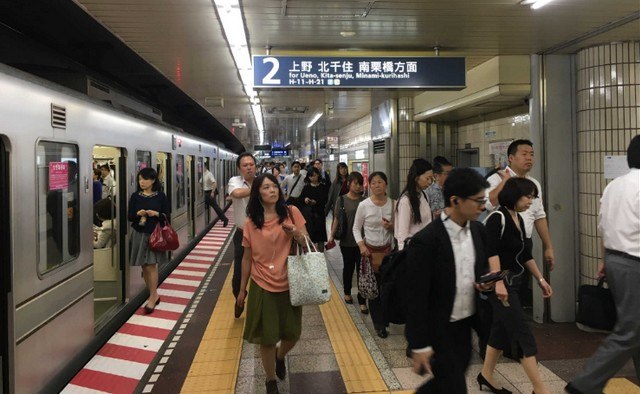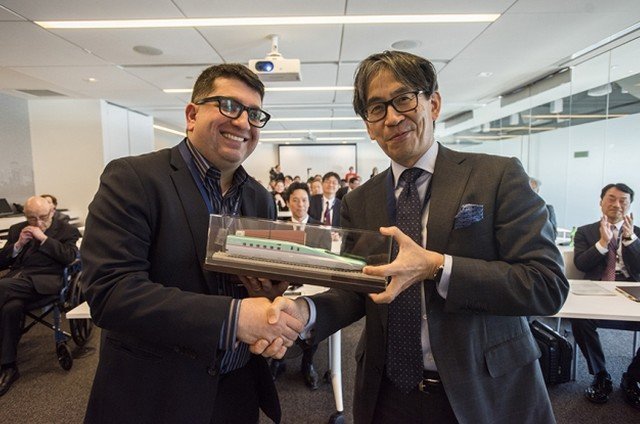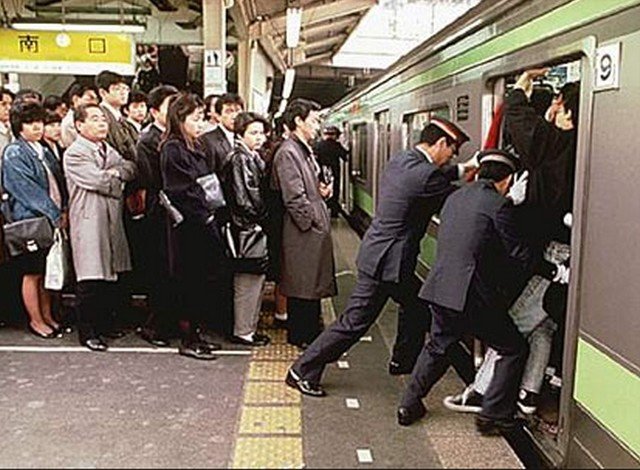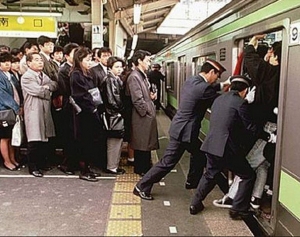How will the Tokyo metro deal with tourism and the 2020 Olympics ?
5th, 2018 Serge Fabre No Comment Destination
Almost everyone has already seen Tokyo’s urban transport images overloaded either in the morning when the offices open or at the close. To give you an idea: https://youtu.be/o9Xg7ui5mLA – But what will happen during the Olympic Games in 2020? Tokyo’s metro, renowned for its punctuality, efficiency and sometimes overcrowded trains, will be put to the test when hundreds of thousands of foreign tourists arrive in the capital for the 2020 Olympic Games.
20 million people use public transport
 At least 20 million people would use public transport daily in the Tokyo agglomeration, where more than 35 million people live.
At least 20 million people would use public transport daily in the Tokyo agglomeration, where more than 35 million people live.
There are more than 880 interconnected railway stations in Tokyo’s metropolitan area, including 282 metro stations, with several hundred additional stations in each of the three surrounding densely populated suburban prefectures.
There are at least 30 operators operating 121 passenger rail lines, 102 of which serve Tokyo and 19 others serving Greater Tokyo.
 Today, impeccable punctuality has become an essential element of the network, as well as an absolute necessity, especially during peak morning hours.
Today, impeccable punctuality has become an essential element of the network, as well as an absolute necessity, especially during peak morning hours.
What will happen during the Olympic Games, which should attract 600,000 people to the city at the end of July and beginning of August 2020?
The Shinkansen was born for the 1964 Games
Taking over the torch of the next event in 2020, Tokyo is no stranger to the lasting effects of the Olympic Games on rail transport.
 His Shinkansen high-speed trains, which currently cross the Japanese countryside at speeds of up to 320 km/h, were launched to coincide with the 1964 Games.
His Shinkansen high-speed trains, which currently cross the Japanese countryside at speeds of up to 320 km/h, were launched to coincide with the 1964 Games.
However, a recent study showed that Tokyo’s heavily congested rail system may have difficulty coping with the flood of incoming passengers in 2020.
This is one of the concerns of the Organising Committee for the Olympic and Paralympic Games, which is already under scrutiny after construction delays at several venues.
Some specialists predict the worst
Last May, Azuma Taguchi, a professor at Chuo University, published a study revealing that overcrowding during the Olympic Games could « paralyze » transfer stations and main lines.
According to Professor Taguchi, there are solutions. Among these, commuters could be forced to work from home.
 Japan’s work culture will be difficult to change
Japan’s work culture will be difficult to change
Londoners had the same fears when they hosted the 2012 Olympic Games, but companies helped by encouraging their staff not to use public transport during the Games.
However, in the work culture in Japan, where employees are expected to report at regular hours even in bad weather, flexibility may not be as high.
For example, office workers often wait until the last minute to leave the office before a typhoon, creating massive congestion in stations and on train platforms.
The authorities are starting to take action
 Last year the government introduced a program called « Jisa-Biz », translated as « jet lag », which it hopes will help alleviate the problem.
Last year the government introduced a program called « Jisa-Biz », translated as « jet lag », which it hopes will help alleviate the problem.
The plan encourages companies to adapt their employees’ working hours and open satellite offices away from busy areas. More than 840 companies have already joined the program.
Railways companies make proposals
Tokyo Metro (one of the operators) indicates that Gaienmae station on the Ginza line and Tatsumi station on the Yurakucho line will probably be the most affected due to their proximity to Olympic venues.
Nevertheless, he says that preparations are underway to ensure a smooth service. One of the spokespersons stated: » We inspect passenger flows in stations and simulate passenger flows to identify the causes of obstruction« . The operator plans to increase the number of employees and patrol personnel to manage overcrowding at some subway stations.
 Expansion of platforms for JR East
Expansion of platforms for JR East
As part of its 2020 project, the East Japan Railway Company (JR East) has committed to expanding the platforms.
The company is also committed to working with other transportation service providers to increase capacity during high demand periods. JR
East will provide information in several languages to transit centres and include station numbers on signs to avoid confusion.
Security will be increased
These major international events require higher levels of security. Cameras are being installed everywhere in the stations but also on the surface. This is new because security in Japan is legendary.
We will of course come back to these preparations for the Olympic Games. Japan hopes to exceed 40 million visitors by 2020. The country will be one of the major tourist countries.
Serge Fabre
On the same subject
Already 300,000 after Hurricane Melissa
The Jamaica Tourist Board has officially announced that the island has surpassed the symbolic...
Why North American tourists overwhelmingly prefer trains to visit Europe
As the end of 2025 approaches, Rail Europe has just unveiled booking statistics revealing...
Fighting continues between Cambodia and Thailand, bad news for tourism
Violent fighting erupted yesterday, Thursday, December 11, on the disputed border between Cambodia and...










